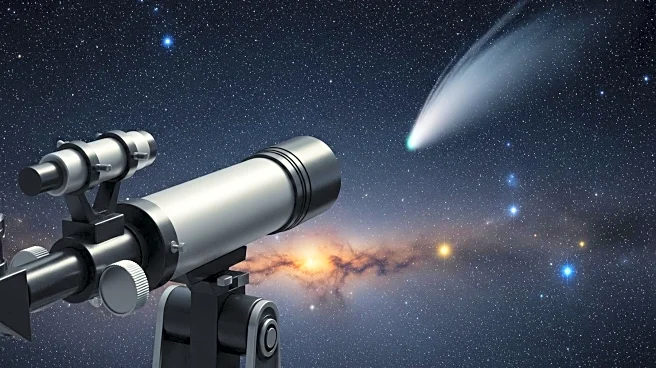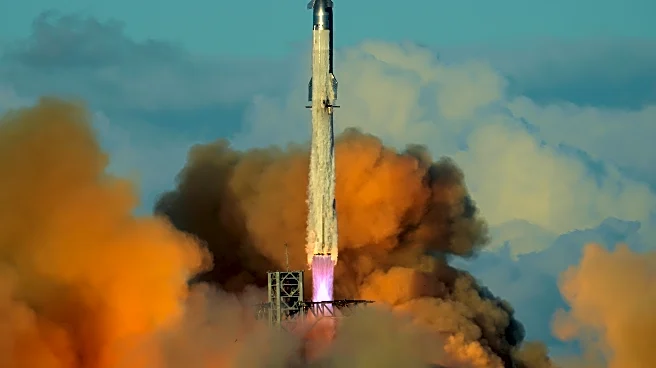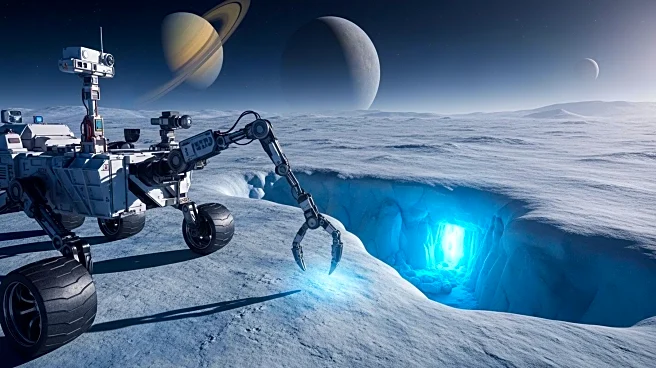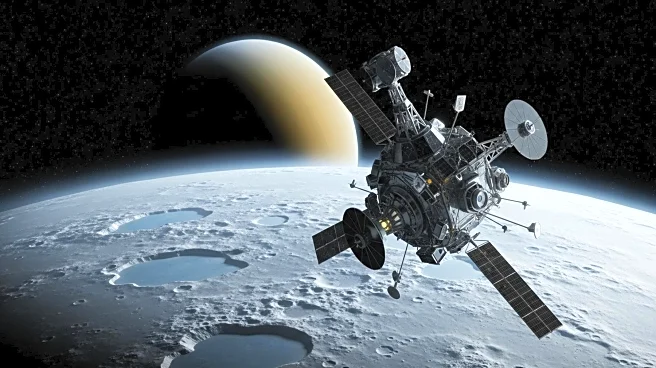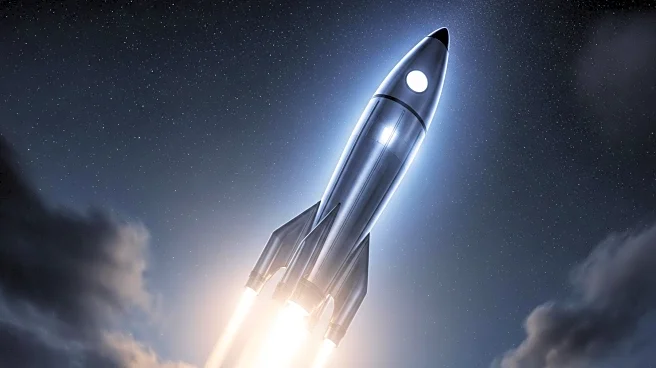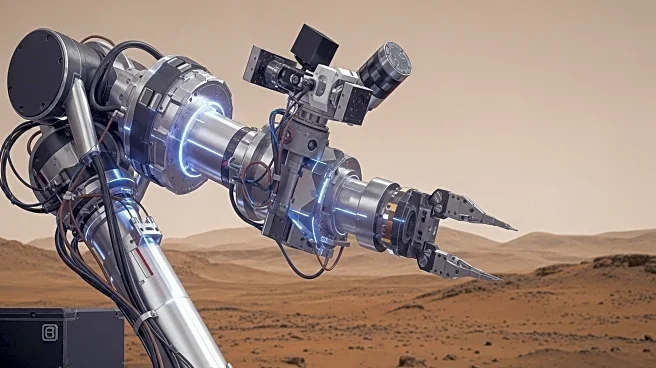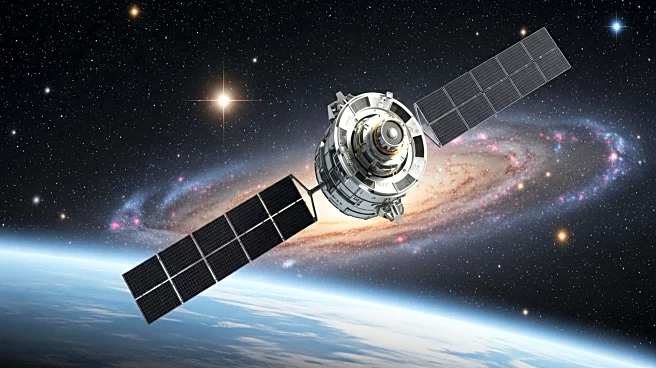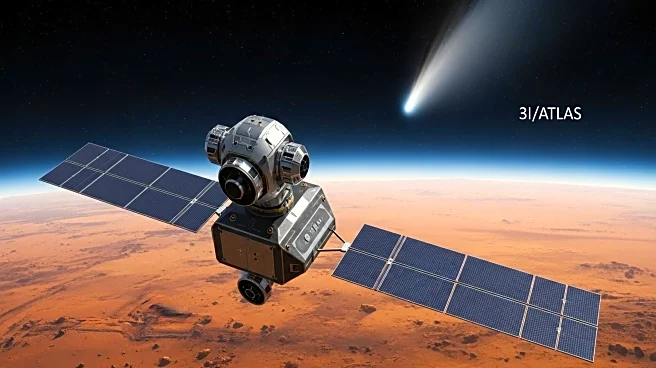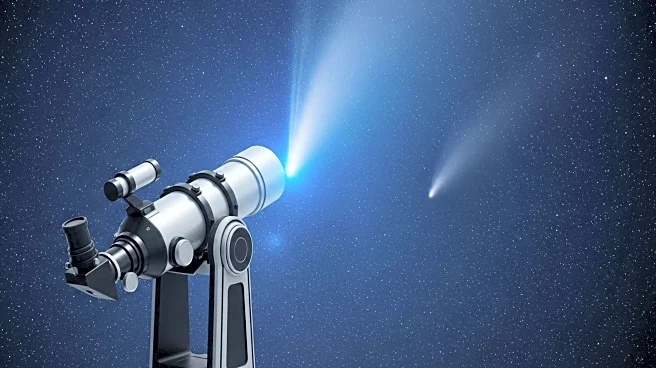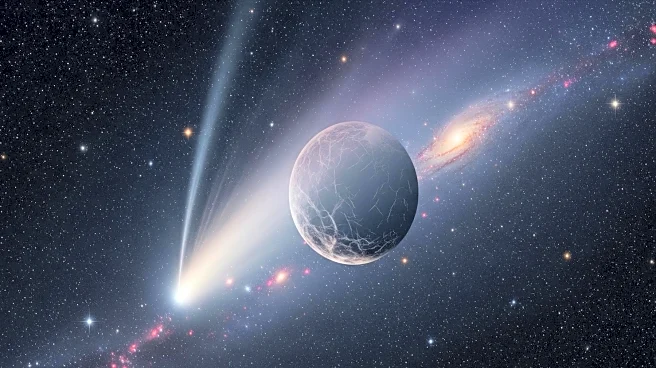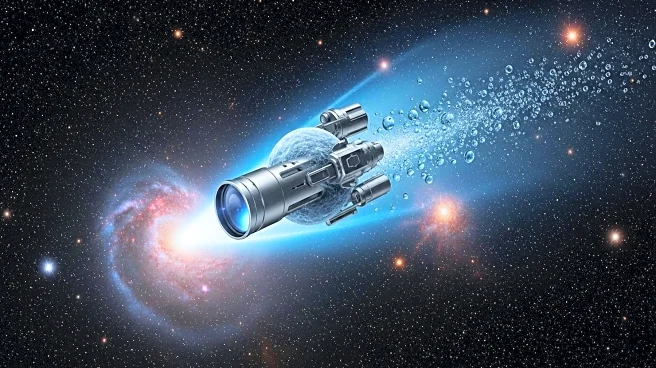What is the story about?
What's Happening?
NASA has reported the passage of Comet 3I/ATLAS, an interstellar visitor, through our solar system. This comet is the third known object from outside our solar system to be discovered in our celestial neighborhood. It will approach Earth at a distance of about 1.8 astronomical units, equivalent to approximately 170 million miles. The European Space Agency (ESA) has noted that Comet 3I/ATLAS will reach its closest point to the sun around October 30, at a distance of about 1.4 astronomical units, just inside the orbit of Mars. ESA's ExoMars Trace Gas Orbiter and Mars Express spacecraft have dedicated cameras to observe the comet as it passes closest to Mars on October 3. Although the comet is currently too close to the sun for ground-based telescopes to observe, NASA anticipates it will reappear on the other side of the sun by early December 2025, allowing for renewed observations.
Why It's Important?
The passage of Comet 3I/ATLAS is significant as it provides scientists with a rare opportunity to study an interstellar object. Such observations can offer insights into the composition and behavior of celestial bodies originating from outside our solar system. Understanding these objects can enhance our knowledge of the universe and the potential for similar interstellar visitors. The comet's journey also highlights the capabilities of space agencies like NASA and ESA in tracking and studying distant celestial phenomena, contributing to advancements in space exploration and astronomy.
What's Next?
As Comet 3I/ATLAS continues its journey, scientists are preparing for its reappearance in December 2025, when it will be observable from Earth again. This will allow for further study and data collection, potentially revealing more about its composition and origin. Space agencies may continue to monitor its trajectory and interactions with other celestial bodies, providing valuable information for future interstellar research.
Beyond the Headlines
The observation of Comet 3I/ATLAS underscores the importance of international collaboration in space exploration. The joint efforts of NASA and ESA in tracking and studying the comet demonstrate the benefits of shared resources and expertise in advancing scientific knowledge. Additionally, the study of interstellar objects like Comet 3I/ATLAS may contribute to discussions on the potential for life beyond Earth, as understanding the materials and conditions of such objects can inform theories about the formation of life in different parts of the universe.
AI Generated Content
Do you find this article useful?
